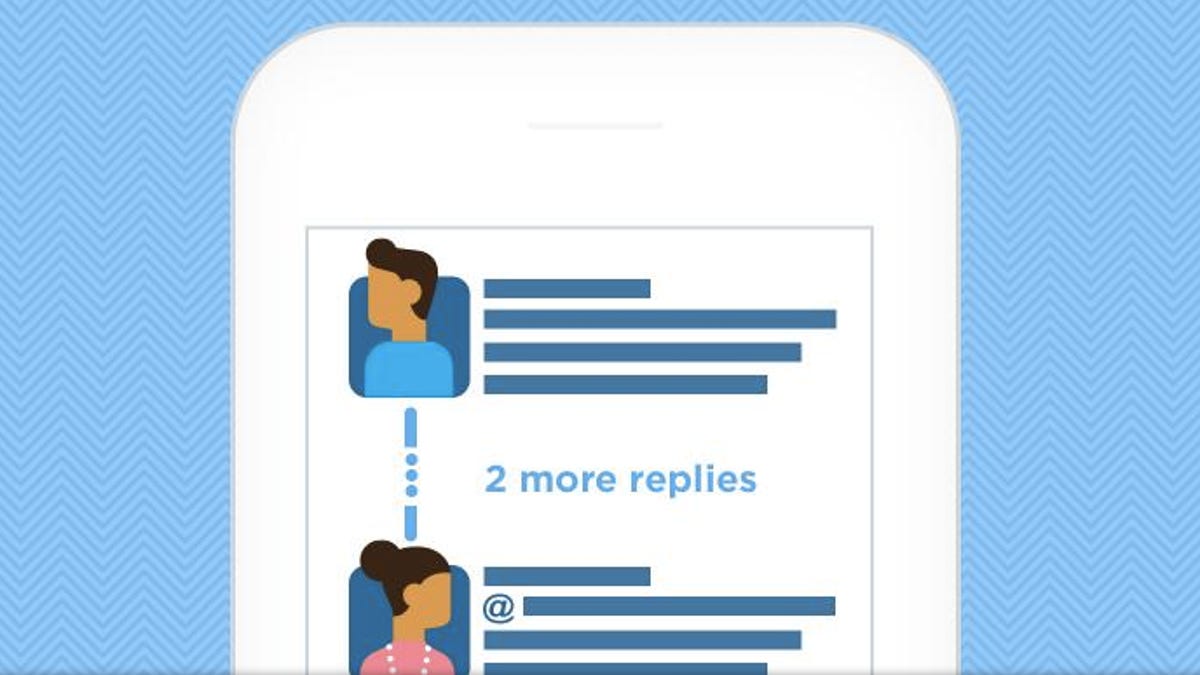Code red? Twitter's blue line brings out the bile
In flipping the script, the information network has upset people who preferred to see tweets in reverse chronological order.

What's not to love about something intended to make sense of the nonsensical? A lot, apparently.
Wednesday, Twitter updated its Web, iOS, and Android applications with a conversation feature that groups together strings of tweets in chronological order, with a vertical line, in members' timelines.
The change, a radical departure from a seven-year practice of showing tweets in reverse chronological fashion, is meant to disentangle the discussions behind seemingly errant replies. It's the kind of thing perfect for newcomers who would otherwise be confused by the language of Twitter, so the logic goes.
But Twitter's new "blue line" -- the line that links together replies in conversations -- is receiving the type of impassioned reaction often saved for a different type of blue line. And the bemoaning isn't just coming from power users who can't stand change or the additional noise.
A Twitter search for "twitter blue line," for instance, reveals a stream of vitriol directed at Twitter and its blue line. For the sticklers out there, technically, the vertical line is only blue in Twitter's mobile applications. On desktop, the line matches the color palette you've chosen for your Twitter design. But that's not the point.
Plenty of regular Joes and Janes, the very people that Twitter wanted to please with this release, are not responding well to the change. Reactions range from confusion to extreme hatred, and, of course, there is no shortage of pregnancy jokes. Those that go into detail, are, like the power users, complaining of conversation overload and being unable to ignore chit-chat they don't care about. The feature bubbles up conversations with new replies to the top of a person's timeline, which means hot threads between people you follow will resurface repeatedly, whether you want them to or not.
Here's a small sampling of reactions:
Ew I don't like this whole "blue line, twitter conversation indicator" thing.
— Megannn :) (@MeganTuyet) August 29, 2013
"@xxxDEVxxx: The new twitter "blue line" feature has screwed up my timeline.. Hate it to the. Core. :/ @twitter remove it."
— Miss Khan (@Saman_SG) August 29, 2013
This new twitter update <<< #blueline ??
— Sarah Weaver (@Sarah_Improved) August 29, 2013
Anyone else hoping that @twitter dispense with this daft blue line? If I wanted to see the same post repeatedly I'd look at it repeatedly!
— QPRnet (@qprnet) August 29, 2013
The only thing I can deduce from Twitter's new #blueline is that I might/might not, be pregnant
— Graham Robert Moore (@Billyralphie) August 29, 2013
It's hard to tell exactly how many people are pissed off at Twitter for the change, and whether the social network has a problem on its hands or a situation that will fade away in a matter of days. And for every hater there could be a dozen people who are quietly appreciating the value of the added context. Either way, Twitter declined to comment.
Ironically, though, with Twitter now structured around conversations, the pissy conversations will get heavier circulation should they solicit replies. Hey, that's one way to get people talking.

